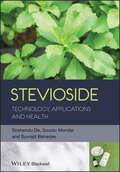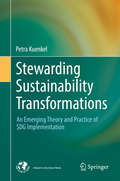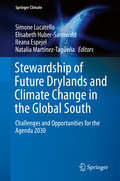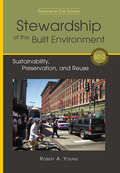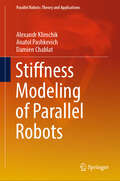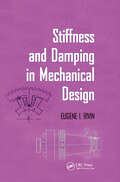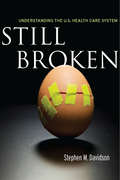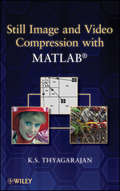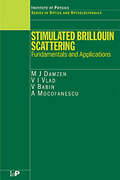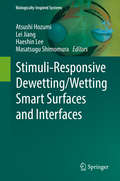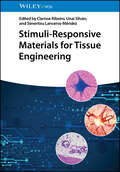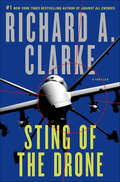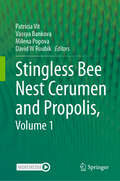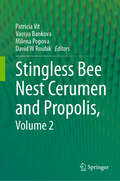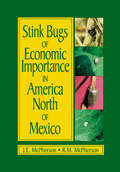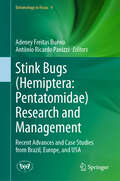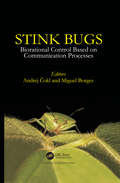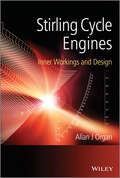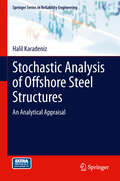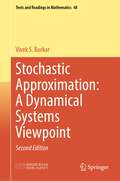- Table View
- List View
Stevioside: Technology, Applications and Health
by Suvrajit Banerjee Sourav Mondal Sirshendu DeStevioside is one of the naturally occurring sweeteners, belonging to the diterpene glycoside family, which can be widely applied in food, drinks, medicine and consumer chemicals. It is a good dietary supplement, being non-calorific, thermally stable, non-toxic, with a sugar-like taste profile, and suitable for diabetics, phenylketonuria patients and the obese. It is also non-fermentable, and exhibits anti-carcinogenic, antioxidant and anti-hyperglycemic properties. Stevioside tastes about 300 times sweeter than 0.4% sucrose solution. Thus, it offers a reasonably rare combination of health benefits and taste benefits, making the extraction of stevioside is an area of active research for the food industry as well as academic food scientists.With the rapid increase in the popularity of stevioside as a sugar substitute, particularly with regard to its associated health benefits, there is a need for more efficient and feasible extraction processes for stevioside in the near future. This book offers an in-depth look at perhaps the major “sugar alternative of the future”, up-to-date and in line with the latest global legislation regarding its suitability for consumption and its scope for application.
Stewarding Sustainability Transformations: An Emerging Theory and Practice of SDG Implementation
by Petra KuenkelIn the context of the world’s pressing sustainability challenges this new Report to the Club of Rome presents a novel approach to navigating collaborative change in partnerships between governments, research institutions, corporations and civil society activists. With reference to the 17 Sustainable Development Goals and the Planetary Boundaries it introduces the theory and practice of Collective Stewardship as a management tool that respects the integrity of human and natural systems. Drawing on the work of transdisciplinary scientific scholars and seasoned sustainability practitioners, it shows how transformative change can be built on life’s inherent tendency to generate patterns of vitality and resilience. This ground-breaking monograph shows workable pathways to stewarding patterns of aliveness in social and ecological systems at all levels of the global society. As a highly regarded author and expert in collective leadership, Petra Kuenkel inspires academics and practitioners alike to explore new routes towards co-creating responsible futures in the era of the Anthropocene, where the human footprint has begun to change the course of planetary evolution. She invites decision-makers, researchers, planners and social activists to become stewards of systems patterns, enhance their collaborative competencies and guide life-enhancing socio-ecological interaction at scale. The conceptual architecture the author elaborates builds transformation literacy and boils down to a practical guidance for planning and implementing interventions across all sectors of society. It helps bring about change through a deliberate combination of enlivening narratives, empowering metrics, enabling processes, multi-level governance, guiding regulations, and life-supporting innovation. This comprehensive book sets a new direction in the field of sustainability transformations and will become a foundation for planning collective action and achieving impact at scale.
Stewards of the Grasslands: Canadian Ranchers in Their Own Words
by Dana ReiterThis book offers a series of interviews with Canadian ranchers that highlight the innovative and effective ways that they manage vast swaths of grassland for two complementary goals: commercial viability and sustainable habitats. The book’s author is an academic who grew up among ranchers in the grasslands of Canada, and the expertise and viewpoints she has distilled from these interviews complement the academic literature in accessible and surprising ways . As these productive landscapes face increasingly perilous threats such as development, economic pressures, and extreme weather events, it is the ranchers who live on and manage these native grasslands who are passionate about conserving them.This book is about them, their experiences and the realities of their lives, their view of the world, sharing their knowledge to assist younger ranchers, and their contributions to Canada’s species at risk conservation goals, food security and economy. The book offers practical advice for ranchers, but also reveals the depth of attachment and dedication these ranchers have for the grasslands. They are conservationists at heart, as they not only understand that their livelihood is dependent on the health of the ecosystem they manage, but they also have a deep connection to the land, nurtured oftentimes for many generations. Academics and ranchers have much to learn here, but the book – most of which is the words of the ranchers themselves - is written to give the general public an understanding of this vocation and its role in the conservation of our last remaining grasslands.
Stewardship of Future Drylands and Climate Change in the Global South: Challenges and Opportunities for the Agenda 2030 (Springer Climate)
by Simone Lucatello Elisabeth Huber-Sannwald Ileana Espejel Natalia Martínez-TagüeñaThis volume integrates a conceptual framework with participatory methodologies to understand the complexities of dryland socio-ecological systems, and to address challenges and opportunities for stewardship of future drylands and climate change in the global south. Through several case studies, the book offers a transdisciplinary and participatory approach to understand the complexity of socio-ecological systems, to co-produce accurate resource management plans for sustained stewardship, and to drive social learning and polycentric governance. This systemic framework permits the study of human-nature interrelationships through time and in particular contexts, with a focus on achieving progress in accordance with the 2030 United Nations Agenda for Sustainable Development. The book is divided into four main sections: 1) drylands and socio-ecological systems, 2) transdisciplinarity in drylands, 3) interculturality in drylands, and 4) the governance of drylands. Expert contributors address topics such as pastoralism and the characteristics of successful agricultural lands, the sustainable development goals and drylands, dryland modernization, and arid land governance with a focus on Mexico. The volume will be of interest to dryland researchers, sustainable development practitioners and policymakers.
Stewardship of the Built Environment
by Robert A YoungWhen we think of green building, we tend to picture new construction. But Robert A. Young argues that the greenest building is often the one that has already been built. In Stewardship of the Built Environment, he shows how retrofitting existing structures holds untapped potential for achieving sustainable communities. Stewardship of the Built Environment explores the social, environmental, and economic benefits of reuse-from the societal value of reusing existing buildings to financial incentives available for refurbishment. Readers will become familiar with essential terminology; sustainability and historic preservation metrics; government oversight processes; and opportunities for smart growth afforded by rehabilitation. This knowledge is key to preserving the past while building a sustainable future.
Stick and Rudder: An Explanation of the Art of Flying
by Wolfgang LangewiescheIn the early 1940's, Wolfgang Langewiesche wrote a series of articles in Air Facts analyzing the various aspects of piloting techniques. Based on these articles, Langewiesche's classic work on the art of flying was published in 1944. This book explains precisely what pilots do when they fly, just how they do it, and why. These basics are largely unchanging. The book applies to large airplanes and small, old airplanes and new, and is of interest not only to the learner but also to the accomplished pilot and instructor. Today, several excellent manuals offer the pilot accurate and valuable technical information. But Stick and Rudder remains the leading think-book on the art of flying.
Stiffness Modeling of Parallel Robots (Parallel Robots: Theory and Applications)
by Alexandr Klimchik Anatol Pashkevich Damien ChablatThe book focuses on the stiffness modeling of serial and parallel manipulators It presents fundamentals and enhancements for Virtual Joint Modelling (VJM), Matrix Structural Analysis (MSA) and Finite Element Analysis (FEA). The described techniques consider complex kinematics with numerous passive joints, different types of loadings, including essential loadings leading to critical changes in the manipulator configurations, linear and non-linear stiffness analysis, conventional and non-linear compliance error compensation and stiffness parameters estimation from virtual experiments. Presented enhancement for the VJM integrates in the stiffness analysis external force/torque applied to the end-point, internal preloading in the joints, and auxiliary forces/torques applied to intermediate points. The proposed technique includes computing an equilibrium configuration corresponding to the external/internal loading and allows obtaining the full-scale non-linear force-deflection relation for any given workspace point. This enables the designer to evaluate critical forces that may provoke non-linear behaviours of the manipulators, such as sudden failure due to elastic instability (buckling). The presented enhancement to the MSA allows users to carry out stiffness analysis for serial underactuated structures and over-constrained ones with multiple closed loops. To increase the model accuracy of the VJM and MSA techniques a dedicated FEA-based stiffness model parameters identification technique is introduced in the book. It is based on the virtual experiments in the CAD/CAE environment and allows the VJM and MSA to achieve accuracy comparable with FEA, but it essentially reduces the computational effort, eliminating repetitive re-meshing through the workspace. All considered stiffness modelling techniques, kinematic particularities and loading conditions are illustrated with practical examples and related analysis.
Stiffness and Damping in Mechanical Design
by Eugene RivinOffers designers and users of mechanical systems an overview of structural stiffness and damping and their critical roles in mechanical design. The text assesses the relationship between stiffness and damping parameters in mechanical systems and structural materials. An accompanying disk contains detailed analyses of stiffness- and damping-critical systems.
Still Broken
by Stephen M. DavidsonThe debate over health care policy in the U. S. did not end when President Obama signed the landmark Patient Protection and Affordable Care Act (PPACA) on March 23, 2010. Since then, half the states have sued and federal judges have issued conflicting rulings about the law's constitutionality. In addition, the new Republican-controlled House of Representatives voted to repeal it, and Republicans have pledged to bring it up again during negotiations over the 2012 federal budget. The continuing controversies over PPACA are only one reason that Still Broken: Understanding the U. S. Health Care System is a must-read for engaged citizens, policymakers, students, and scholars alike. The book takes a close look at our problems, proposes solutions to them, and explains how to navigate our political system to effect positive change. It will help readers: * Assess the arguments made by partisans on both sides of the continuing debate. * Understand why President Obama was able to get Congress to pass a comprehensive reform bill even though most of his predecessors tried and failed. * Understand why so many Americans are either confused about its value or actually oppose it. In the book's first part, Stephen M. Davidson paints a lucid picture of the way that the health system works and the forces that produced the monumental problems that we face today. Then, he makes a compelling case for overhauling our system, offering six elements for inclusion in any plan for change. Davidson devotes the last three chapters to a detailed examination of the politics of reform. This assessment will help readers to appreciate both the political achievement represented by passage of the new law and the reasons that opposition to the law remains so widespread, despite all the good it does for the public. Whatever compromises, if any, are accepted by negotiators in the end, the book makes clear why, to fully solve the system's problems, the underlying goal must be to change incentives for all players who participate in the system and, finally, why this goal cannot be achieved by relying solely on market-based solutions. Davidson's captivating and persuasive book demonstrates that only a solution with a large public-sector role can lead us to real reform.
Still Image and Video Compression with MATLAB
by K. S. ThyagarajanThis book describes the principles of image and video compression techniques and introduces current and popular compression standards, such as the MPEG series. Derivations of relevant compression algorithms are developed in an easy-to-follow fashion. Numerous examples are provided in each chapter to illustrate the concepts. The book includes complementary software written in MATLAB SIMULINK to give readers hands-on experience in using and applying various video compression methods. Readers can enhance the software by including their own algorithms.
Stimulated Brillouin Scattering: Fundamentals and Applications (Series in Optics and Optoelectronics)
by M J Damzen V Vlad Anca Mocofanescu V BabinStimulated Brillouin scattering (SBS) is the most important example of a stimulated scattering process-light scattering that occurs when the intensity of the light field itself affects the propagating medium. A phenomenon that has been known of for some 35 years in solid state laser research, it has recently become relevant in the optical fiber ind
Stimuli-Responsive Dewetting/Wetting Smart Surfaces and Interfaces (Biologically-Inspired Systems #11)
by Atsushi Hozumi Lei Jiang Haeshin Lee Masatsugu ShimomuraSuperhydrophobic surfaces, artificially mimicking lotus leaves, have captured the attention of scientists and engineers over the past few decades. Recent trends have shifted from superhydrophobicity to superominipohobicity, or superamphiphobicity. In addition, dynamic rather than static surface wetting/dewetting properties, which can be triggered by various stimuli, including temperature, pH, magnetic/electric fields, solvents, light exposure etc, have been highly sought after for commercial applications. This book will focus on recent topics related to various stimuli-responsive wetting/dewetting surfaces, and give an overview of the knowledge and concepts of how to design and establish these smart artificial surfaces, which can be used for technical developments in a wide variety research fields.
Stimuli-Responsive Materials for Tissue Engineering
by Senentxu Lanceros-Méndez Clarisse Ribeiro Unai SilvánEnables advanced tissue regeneration approaches via expertise from the fields of materials science and biology Stimuli-Responsive Materials for Tissue Engineering comprehensively reviews the use of stimuli-responsive materials in the context of advanced tissue engineering approaches, highlighting applications, challenges, and solutions and reporting on the current state of the art of smart and multifunctional materials being used for tissue engineering, focusing on material types and their properties. The progress that has already been achieved in the field is put into perspective by covering the remaining challenges in the research field of tissue engineering, and solutions are outlined to overcome those. By addressing challenges and ways to overcome them, Stimuli-Responsive Materials for Tissue Engineering is a highly practical resource on advanced tissue regeneration. Stimuli-Responsive Materials for Tissue Engineering contains information on: Smart and multifunctional materials for tissue engineering, covering electroactive and magnetoactive materials Shape memory, photo-responsive, and controlled degradation of stimuli-responsive materials Tissue regeneration strategies based on smart and active biomaterials, covering bone, heart, and neural tissue regeneration Main applications where these biomaterials can be applied, such as in bone, muscle, and skin regeneration Other potential areas where the covered biomaterials are expected to make a major impact in the next decade With comprehensive coverage of the subject, Stimuli-Responsive Materials for Tissue Engineering is an essential resource for materials scientists, bioengineers, engineering scientists, and biotechnologists seeking to understand advanced tissue regeneration approaches, current challenges, and potential solutions to advance progress in the field.
Sting of the Drone: A Thriller
by Richard A. Clarke“Prepare for your hand to take hold of the joy stick, your heart to lodge firmly in your throat. Tom Clancy takes to the air. Put this book on your radar.” —Ridley Pearson, New York Times–bestselling authorIn Washington, D.C., the Kill Committee gathers in the White House’s Situation Room to pick the next targets for the United States drone program. At an airbase just outside Las Vegas, a team of pilots, military personnel, and intelligence officers follow through on the committee’s orders, finding the men who have been deemed a threat to national security and sentenced to death.Meanwhile, on the other side of the world, in the mountains where the drones hunt their prey, someone has decided to fight back. And not just against the unmanned planes that circle their skies, but against the Americans at home who control them.In Sting of the Drone, #1 New York Times–bestselling author Richard A. Clarke draws on his decades-long experience at the very highest levels of national security to craft a thrilling novel that has the feel of nonfiction, taking us behind closed doors to meet the men and women who protect America—and those who seek to do us harm.“On rare occasions a thriller comes along that turns out to be prophecy: Sting of the Drone is one of them. This rip-snorting thriller may be the best unclassified peek you will ever get on the new high-tech offensive in the war against terrorism. A seminal, prophetic, troubling must-read.” —Stephen Coonts, New York Times–bestselling author“The take-no-prisoners plot serves up a banquet of high drama, action, and adventure. A great read.” —Steve Berry, New York Times–bestselling author
Stingless Bee Nest Cerumen and Propolis, Volume 1
by Patricia Vit Milena Popova Vassya Bankova David W RoubikMeliponini, the stingless bees of the tropics, process and store honey, pollen and plant resins to maintain their colonies. The chemical components of their nests are bioactive and believed to be therapeutic for a long list of maladies. However, only recently are tests and analyses being done with molecular and modern laboratory techniques, such as high throughput EDX, HPIC, HPLC, GC, NMR, PCR, and ultrastructural SEM; coupled with diverse detectors such as DAD, RI, MS, SCD.This two-volume book is about the cerumen –plant resins mixed with stingless bee wax– and propolis, which fortify the colony in ways that are beginning to be understood. It includes reviews and new research on diverse topics involving the chemistry and bioactivity of plant resins, cerumen, propolis, besides bee and microbe behavior and ecology. These analytic studies are presented along with stingless bee biodiversity, palynology, cultural knowledge, bee foraging behavior, resin flower evolution, ecology, and evolution of nest microbe mutualisms, social immunity, human health, the decisive role of microbiology investigation in moving forward, natural history of stingless bee colonies and nests, marketing, and bibliometrics for plant resin use by bees, propolis, and the Starmerella yeast.
Stingless Bee Nest Cerumen and Propolis, Volume 2
by Patricia Vit Milena Popova Vassya Bankova David W RoubikMeliponini, the stingless bees of the tropics, process and store honey, pollen and plant resins to maintain their colonies. The chemical components of their nests are bioactive and believed to be therapeutic for a long list of maladies. However, only recently are tests and analyses being done with molecular and modern laboratory techniques, such as high throughput EDX, HPIC, HPLC, GC, NMR, PCR, and ultrastructural SEM; coupled with diverse detectors such as DAD, RI, MS, SCD.This two-volume book is about the cerumen –plant resins mixed with stingless bee wax– and propolis, which fortify the colony in ways that are beginning to be understood. It includes reviews and new research on diverse topics involving the chemistry and bioactivity of plant resins, cerumen, propolis, besides bee and microbe behavior and ecology. These analytic studies are presented along with stingless bee biodiversity, palynology, cultural knowledge, bee foraging behavior, resin flower evolution, ecology, and evolution of nest microbe mutualisms, social immunity, human health, the decisive role of microbiology investigation in moving forward, natural history of stingless bee colonies and nests, marketing, and bibliometrics for plant resin use by bees, propolis, and the Starmerella yeast.
Stink Bugs of Economic Importance in America North of Mexico
by Robert McPherson J. E. McPhersonMany scientists have reported an extensive amount of information on the biology, life history, and damage potential of stink bugs. However, this information is scattered among numerous journals, periodicals, and other publications. Stink Bugs of Economic Importance in America North of Mexico brings together applied and nonapplied literature on the biology, life history, and damage potential of stink bugs in one complete and concise format. Written by two top-notch researchers, the book includes section by section discussions of various economic stink bug species, damage to individual crops and separate tables of host plants organized by common name, scientific name, and family name. With numerous unique line drawings and over 700 references to stink bug publications, it includes keys for identification of stink bug species and strategies for the control of destructive species.
Stink Bugs: Recent Advances and Case Studies from Brazil, Europe, and USA (Entomology in Focus #9)
by Antônio Ricardo Panizzi Adeney Freitas BuenoThis book offers a wealth of essential information about stink bugs, including taxonomic updates of pest species, their geographic distribution, biology and behavior, and the latest research on sustainable management strategies. The book features contributions from globally renowned specialists who have expertise in specific topics related to stink bug research.In addition to discussing the potential of biological control methods, the book explores innovative approaches such as RNAi, CRISPR techniques, and the use of resistant plants to manage stink bug populations. The book also examines the potential use of botanical insecticides as a more sustainable alternative to chemical control methods.Overall, this book is a valuable resource for researchers, entomologists, and other professionals who are interested in stink bug research and sustainable pest management. Its well-organized and comprehensive approach makes it an essential addition to any entomologist's library.
Stinkbugs: Biorational Control Based on Communication Processes
by Andrej Cokl Miguel BorgesThis book presents an overview of the Pentatomidae species, covering their biology, phylogeny and reproductive behavior, main plants used in their diet and their nutritional exigencies, predatory stinkbugs, interactions between herbivores-plants and natural enemies, use of pheromone for monitoring phytophagous populations, and chemical and vibrational communication signals. It also presents possible technologies to be applied in field crops for pest management that could be developed as the basis of the interplay of stink bug communication signals.
Stinking Stones and Rocks of Gold: Phosphate, Fertilizer, and Industrialization in Postbellum South Carolina (New Perspectives on the History of the S)
by Shepherd W McKinleySouth Carolina Historical Society George C. Rogers Jr. Book Award "A solid contribution."--Journal of American History "An insightful analysis of the rise of the phosphate and fertilizer industries in the South Carolina lowcountry."--Business History Review "Places the rise of these industries in the context of the struggle for southern economic leadership in the years following the Civil War. . . . A well-written, engaging history."--Journal of Economic History "McKinley posits that the fertilizer industry emancipated former planter elites from the slave-based antebellum economy. . . . Ultimately, manufactured fertilizer contributed to fundamental changes in southern agriculture."--American Historical Review "A significant contribution to the story of industrialization in the New South."--Choice "Illustrates how South Carolina’s abundant phosphate deposits bred vibrant mining and fertilizer industries in Charleston and adjacent environs that helped reshape land, labor, and economy in the heartland of the former Confederacy."--Journal of Southern History "A finely layered and important study that fills in gaps in the industrial history of the New South and especially low-country South Carolina."--Sidney Bland, author of Preserving Charleston's Past, Shaping Its Future: The Life and Times of Susan Pringle Frost "Skillfully blurs the old, comfortable line between Old and New South economies and paints a nuanced picture of the new labor relations in the post-slavery era."--Charles Holden, author of In the Great Maelstrom In the first book ever written about the impact of phosphate mining on the South Carolina plantation economy, Shepherd McKinley explains how the convergence of the phosphate and fertilizer industries carried long-term impacts for America and the South. Fueling the rapid growth of lowcountry fertilizer companies, phosphate mining provided elite plantation owners a way to stem losses from emancipation. At the same time, mining created an autonomous alternative to sharecropping, enabling freed people to extract housing and labor concessions. Stinking Stones and Rocks of Gold develops an overarching view of what can be considered one of many key factors in the birth of southern industry. This top-down, bottom-up history (business, labor, social, and economic) analyzes an alternative path for all peoples in the post-emancipation South.
Stirling Cycle Engines
by Allan J. OrganSome 200 years after the original invention, internal design of a Stirling engine has come to be considered a specialist task, calling for extensive experience and for access to sophisticated computer modelling. The low parts-count of the type is negated by the complexity of the gas processes by which heat is converted to work. Design is perceived as problematic largely because those interactions are neither intuitively evident, nor capable of being made visible by laboratory experiment. There can be little doubt that the situation stands in the way of wider application of this elegant concept.Stirling Cycle Engines re-visits the design challenge, doing so in three stages. Firstly, unrealistic expectations are dispelled: chasing the Carnot efficiency is a guarantee of disappointment, since the Stirling engine has no such pretentions. Secondly, no matter how complex the gas processes, they embody a degree of intrinsic similarity from engine to engine. Suitably exploited, this means that a single computation serves for an infinite number of design conditions. Thirdly, guidelines resulting from the new approach are condensed to high-resolution design charts - nomograms. Appropriately designed, the Stirling engine promises high thermal efficiency, quiet operation and the ability to operate from a wide range of heat sources. Stirling Cycle Engines offers tools for expediting feasibility studies and for easing the task of designing for a novel application. Key features:Expectations are re-set to realistic goals.The formulation throughout highlights what the thermodynamic processes of different engines have in common rather than what distinguishes them.Design by scaling is extended, corroborated, reduced to the use of charts and fully Illustrated.Results of extensive computer modelling are condensed down to high-resolution Nomograms.Worked examples feature throughout. Prime movers (and coolers) operating on the Stirling cycle are of increasing interest to industry, the military (stealth submarines) and space agencies. Stirling Cycle Engines fills a gap in the technical literature and is a comprehensive manual for researchers and practitioners. In particular, it will support effort world-wide to exploit potential for such applications as small-scale CHP (combined heat and power), solar energy conversion and utilization of low-grade heat.
Stoat in the Dock: Ecology and Management of Invasive Mustelids in New Zealand (Fascinating Life Sciences)
by Carolyn M. KingThis book surveys the ecology of stoats resident in New Zealand since the 1880s, when they were deliberately imported from UK as potential agents of biological control against rabbits. Our current understanding of them and of their impacts on the communities of native animals and birds with which they now live has developed over decades of research. Past knowledge is essential to inform future decisions on when, where and how to minimize damage from stoats in the future. New Zealand is one of the most significant known examples of the drastic impacts of invasive predators on endemic species and communities, but its story is largely unfamiliar to international audiences. This is a detailed, academically rigorous and fully documented account of how introduced mustelids have made themselves at home in New Zealand, written by a specialist stoat biologist as a single coherent story. Each chapter includes a section explaining the context in which the most important details of the biology of stoats (and, to a lesser extent, ferrets) have been documented, what techniques worked and what did not, and why. The book is written primarily for the well-informed general public, plus a cross-disciplinary audience of academics, senior undergraduates and postgraduates interested in the history of interactions between predators and native wildlife, and professionals working on invasive species in New Zealand and elsewhere. It will be of special interest to conservationists, birdwatchers and naturalists.
Stochastic Analysis in Production Process and Ecology Under Uncertainty
by Bogusław BiedaThe monograph addresses a problem of stochastic analysis based on the uncertainty assessment by simulation and application of this method in ecology and steel industry under uncertainty. The first chapter defines the Monte Carlo (MC) method and random variables in stochastic models. Chapter two deals with the contamination transport in porous media. Stochastic approach for Municipal Solid Waste transit time contaminants modeling using MC simulation has been worked out. The third chapter describes the risk analysis of the waste to energy facility proposal for Konin city, including the financial aspects. Environmental impact assessment of the ArcelorMittal Steel Power Plant, in Kraków - in the chapter four - is given. Thus, four scenarios of the energy mix production processes were studied. Chapter five contains examples of using ecological Life Cycle Assessment (LCA) - a relatively new method of environmental impact assessment - which help in preparing pro-ecological strategy, and which can lead to reducing the amount of wastes produced in the ArcelorMittal Steel Plant production processes. Moreover, real input and output data of selected processes under uncertainty, mainly used in the LCA technique, have been examined. The last chapter of this monograph contains final summary. The log-normal probability distribution, widely used in risk analysis and environmental management, in order to develop a stochastic analysis of the LCA, as well as uniform distribution for stochastic approach of pollution transport in porous media has been proposed. The distributions employed in this monograph are assembled from site-specific data, data existing in the most current literature, and professional judgment.
Stochastic Analysis of Offshore Steel Structures
by Halil KaradenizStochastic Analysis of Offshore Steel Structures provides a clear and detailed guide to advanced analysis methods of fixed offshore steel structures using 3D beam finite elements under random wave and earthquake loadings. Advanced and up-to-date research results are coupled with modern analysis methods and essential theoretical information to consider optimal solutions to structural issues. As these methods require and use knowledge of different subject matters, a general introduction to the key areas is provided. This is followed by in-depth explanations supported by design examples, relevant calculations and supplementary material containing related computer programmers. By combining this theoretical and practical approach Stochastic Analysis of Offshore Steel Structures cover a range of key concepts in detail including: The basic principles of standard 3D beam finite elements and special connections, Wave loading - from hydrodynamics to the calculation of wave loading on structural members, Stochastic response calculations with corresponding solution algorithms including earthquakes, and Fatigue damage, reliability calculation and reliability based design optimization. The broad and detailed coverage makes this a solid reference for research oriented studies and practical sophisticated design methods. Students, researchers, insuring bodies and practical designer offices can turn to Stochastic Analysis of Offshore Steel Structures to broaden their theoretical understanding and develop their practical designs and applications of 3D finite analysis in fixed offshore steel structures.
Stochastic Approximation: A Dynamical Systems Viewpoint (Texts and Readings in Mathematics #48)
by Vivek S. BorkarThis book serves as an advanced text for a graduate course on stochastic algorithms for the students of probability and statistics, engineering, economics and machine learning. This second edition gives a comprehensive treatment of stochastic approximation algorithms based on the ordinary differential equation (ODE) approach which analyses the algorithm in terms of a limiting ODE. It has a streamlined treatment of the classical convergence analysis and includes several recent developments such as concentration bounds, avoidance of traps, stability tests, distributed and asynchronous schemes, multiple time scales, general noise models, etc., and a category-wise exposition of many important applications. It is also a useful reference for researchers and practitioners in the field.
